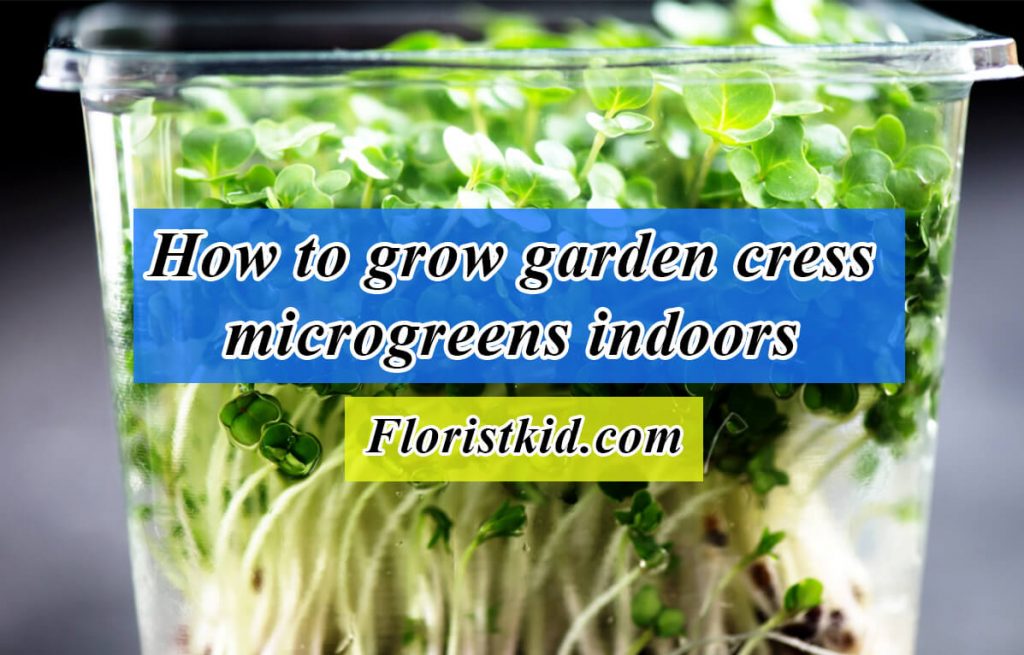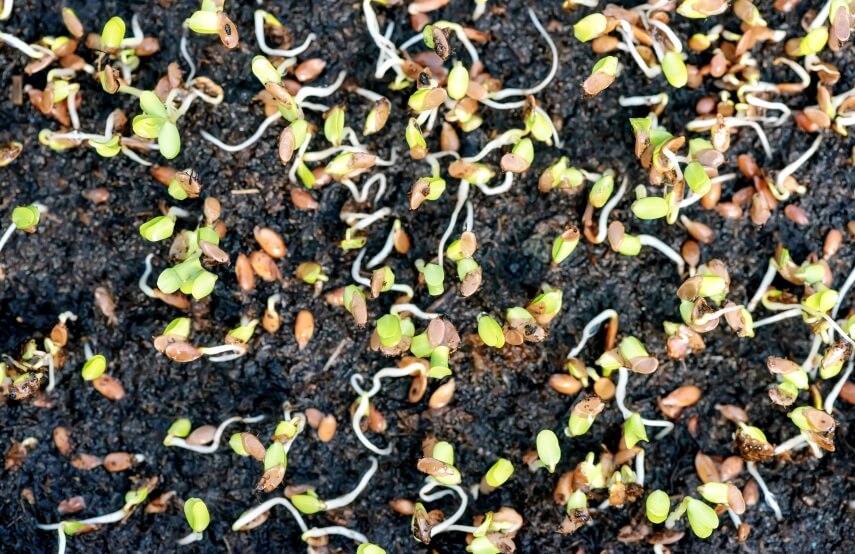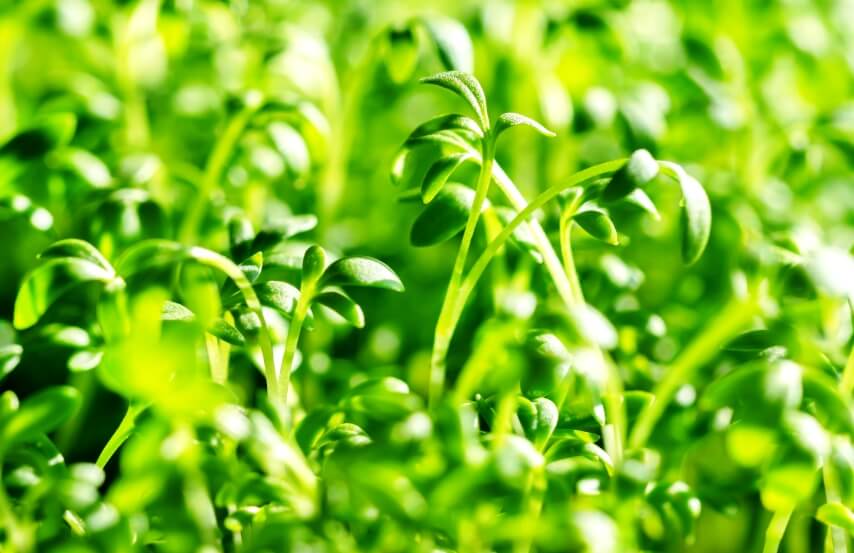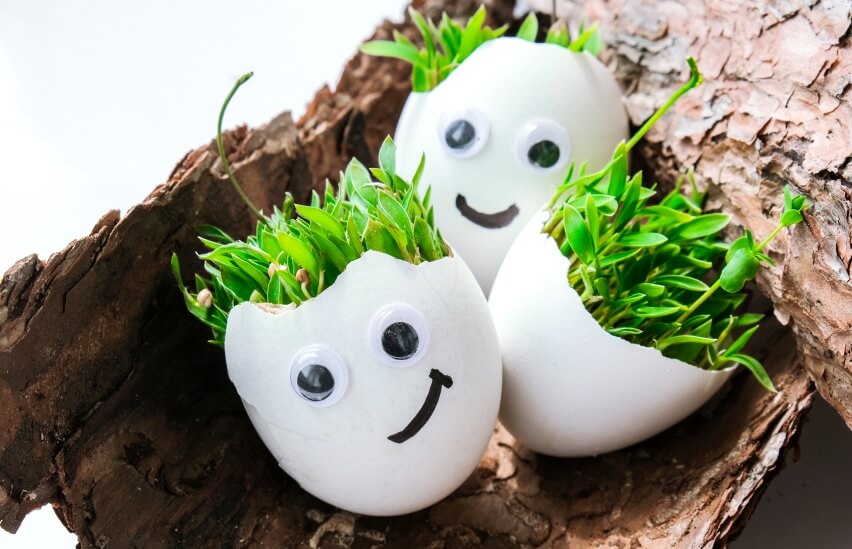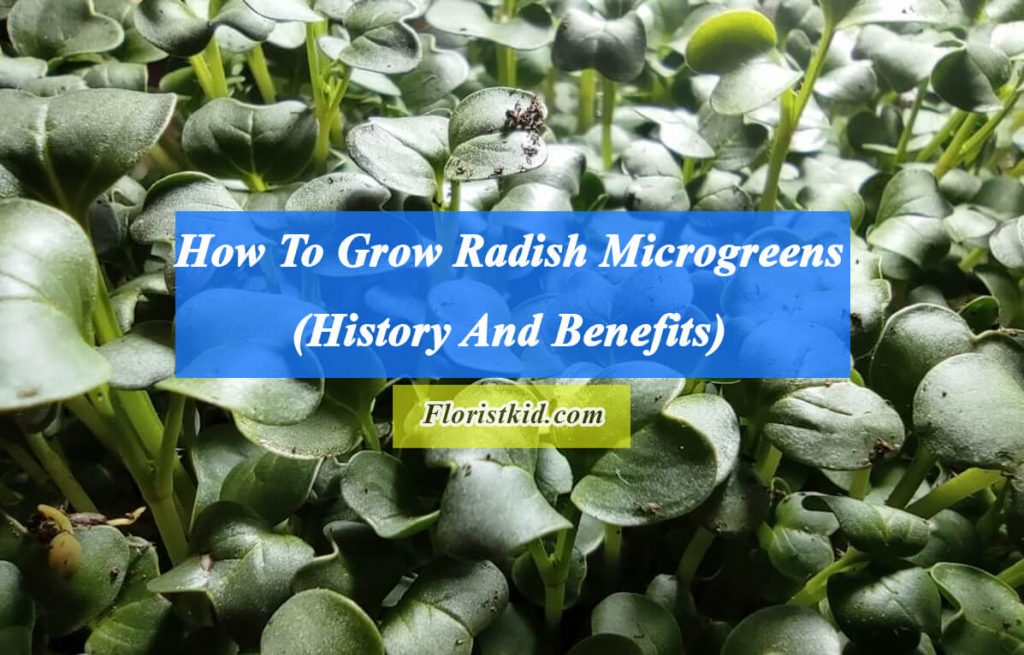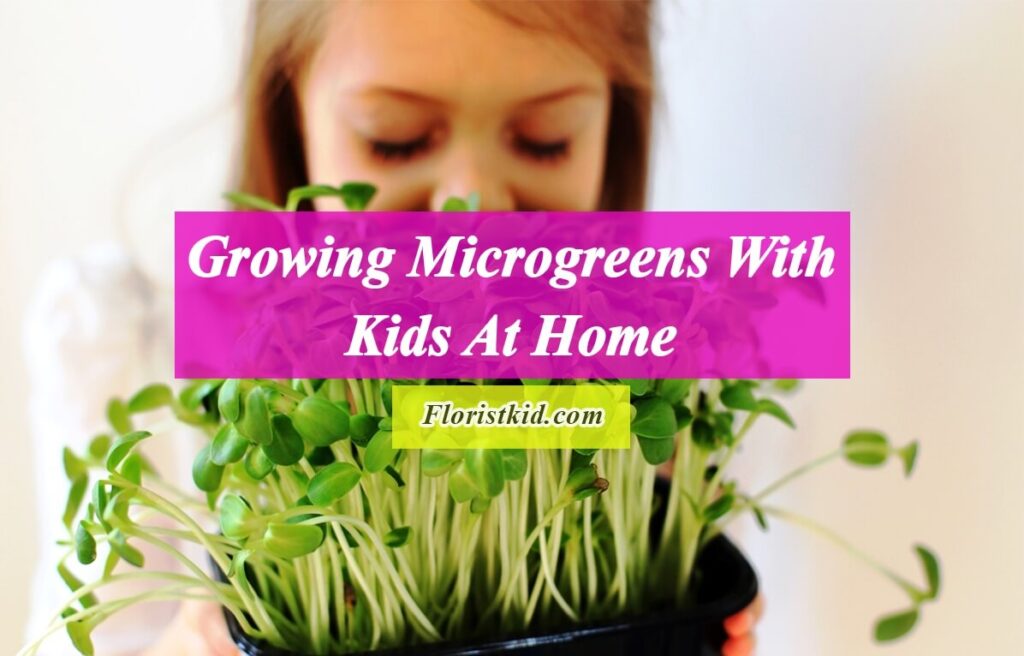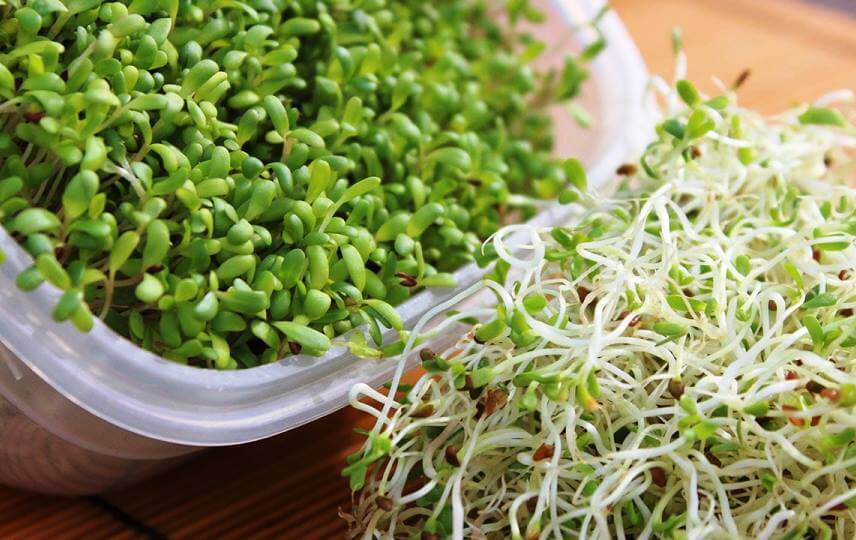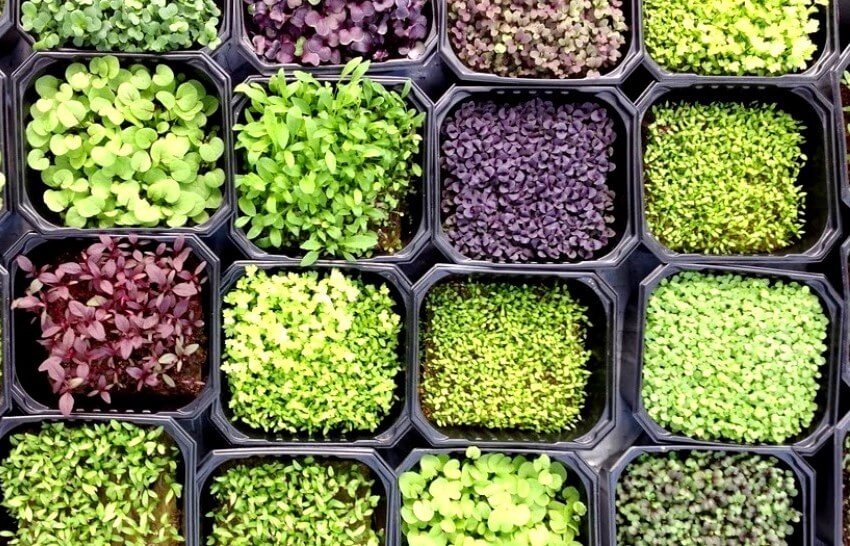Garden cress is a simple microgreen to grow, and that is why we have numerous cress kit on the market. It has a tangy flavor and a pleasing bite, and its tiny, soft leaves grow on a white stem. Garden cress microgreen has a surprising spice. It’s great in salad dressings and gives a unique touch to wraps and sandwiches. It’s also delicious on salads, hummus, and other vegetable side dishes. Although keeping it looking fresh and vivid when stored can be difficult, it is a beautiful addition to the home grower’s pallet. Cress micro plants should not be added to a mix as it may rot faster than the other elements..
If Like to know more about microgreens, check these articles:
<<What Are Microgreens >> and <<Microgreen’s benefits>>
History of garden cress
Garden cress, sometimes known as pepper cress, is related to mustard and ordinary watercress. As indicated by its name, it has a strong peppery flavor and is popular as a fresh addition to sandwiches and salads. According to records, it was first used by the Persians in 400 BC. Peppercress has several therapeutic benefits in addition to assisting with digestive and parasite concerns. It is believed to repel insects and aid in the treatment of bug bites. It is known as an appetite stimulant and aphrodisiac due to its stimulating properties. Other health claims include preventing hair loss and preventing leprosy. In the Middle Ages, cress was a royal delicacy, served with bread and salads. By the late sixteenth century, garden cress had made its way to the Americas.
Garden cress microgreen varieties
Cress comes in a variety of colors and shapes. To cultivate garden cress microgreens, people typically utilize the Cressida variety, commonly known as curly cress because of its curled leaves, The Wrinkled Crinkled, which has fancy crinkled leaves, and also the Presto variation. All of these varieties commonly germinate in two to three days. Garden cress is not to be confused with watercress, which is a member of the nasturtium family and requires particular growing conditions to thrive. It grows in shallow, fresh running water in areas shielded from water surges that could harm other plants.
Garden cress microgreens overview
| Family | Brassicaceae |
| Recommended Varieties | Wrinkled Crinkled Cress, Presto, Cressida (Curly) |
| Nutrition | Vitamins A, B2, C and K, Zinc, Thiamin and Niacin, Folate, Biotin, Manganese, potassium, Magnesium |
| Average days to germinate | 2 to 3 days |
| Average days to harvest (after germination) | 8 to 10 days |
| Difficulty | Medium |
Garden cress microgreen benefits
Garden cress has a low-calorie count but is high in nutrients. Raw, one cup (50 grams) contains:
- Protein: 1.3 grams
- Fat: 0 grams
- Calories: 16
- Fiber: 0.5 grams
- Carbs: 3 grams
- Vitamin A: 10% of the DV
- Vitamin C: 39% of the DV
- Vitamin K: 452% of the DV
- Potassium: 6% of the Daily Value (DV)
This herb is naturally low in carbs and fat-free. It also has a minor bit of fiber in it. It contains a substantial amount of vitamin C and moderate quantities of potassium and vitamin A. It’s high in vitamin K, which is essential for blood clotting and bone health, as do many leafy green vegetables.
Vitamins B2, Zinc, Magnesium, Folate, Biotin, Manganese, Potassium, Thiamin, and Niacin are also found in cress microgreens.
This excellent microgreen offers several advantages, five of which are listed below:
Improving bone health
Vitamin K, a fat-soluble vitamin involved in bone production, degradation, and absorption, is abundant in garden cress. The bone protein osteocalcin, in particular, depends on this vitamin to improve bone growth and strength.
Vitamin K is critical for preventing disorders like osteoporosis, which can be brought on by age and nutrient inadequacies. This illness weakens your bones, making you more susceptible to fractures.
Strengthening the immunological system
Vitamin C-rich foods, such as garden cress, may aid in the prevention of illness and boost immune function. Since vitamin C is an antioxidant, it protects against oxidative stress and reduces the risk of inflammation. As a result, lower inflammation levels may protect you from diseases like diabetes, high cholesterol, and heart disease.
Furthermore, this vitamin aids in the prevention of hazardous germs from invading your body’s outermost organ, the skin. Vitamin C also aids in lowering your chance of infection by killing microbes as well as dead cells that can cause tissue damage,
Anti-cancer properties
Garden cress has been shown to have anti-cancer properties in test tubes. Garden cress extract was used in one investigation to treat leukemia cancer cells. The researchers discovered that when garden cress extract concentrations grew, the number of living cancer cells reduced, and the number of healthy cells increased.
Garden cress extracts dramatically inhibited gene expression in liver cancer cells, limiting tumor growth.
Breast milk production
According to one study, garden cress contains vital vitamins and minerals for the production of breast milk and the growth of breast tissue.
It also aids in stimulating prolactin, a key hormone that promotes milk production. Furthermore, this herb aids in eliciting the let-down reflex, which causes the flow of breast milk.
If you are breastfeeding, eat a well-balanced diet that includes protein, dairy, whole grains, fruits, and vegetables, including garden cress.
Good for Your Vision and Eye Health
If the nutritional benefit of garden cress still does not convince you, consider this: one ounce of garden cress contains over 40% of the Daily Value of vitamin A. (in the form of carotenoids). Vitamin A and carotenoids, as you may know, are regarded as one of the best nutrients for the eyes because of their potential to minimize the risk of night vision impairment, cataracts, retinitis pigmentosa, and even age-related macular degeneration, a prevalent cause of blindness in the elderly.
How to grow cress microgreens
The garden cress takes 2 to 3 days to germinate. They can be harvested almost ten weeks after being planted. Growing cress microgreens is very similar to growing other microgreens. To understand more about the general approach for cultivating microgreens, read the article <<Growing Microgreens>>.
garden cress seeds
Growing Tips
- The seed of cress is mucilaginous. This makes the towel approach ideal for removing seed hulls and eliminating extra soil during the washing process.
- Cress seeds are Lightweight, so it is better to sow in large quantities for higher yields.
- Much of the still-germinating seed will be pulled out If the towel is removed early in the germination process. Remove the towel when the roots have set.
Harvesting Tips
- Cress stems and cotyledons are easily broken, so harvest with care.
- Keep an eye out for soil clumping at the stem’s base. Simply cut high enough when harvesting to avoid it.
Washing Tips
- Using the towel method, you can wash the microgreens easily, usually by one to two rinses.
- If soil is utilized to cover the cress seed, the greens will be covered in dirt and seed hulls. This makes washing exceedingly time-consuming and necessitates multiple rinses.
Possible Challenges
- Cress micros start to yellow and degrade if it continues to grow past their peak.
- If you are using a fan to dry your micros, ensure to fluff it frequently to prevent overdrying. Fluff the greens by gently turning them over so that what’s on the bottom goes on top and what’s on top goes on the bottom.
- Cress microgreen has a short shelf life due to its sensitive nature. To avoid quick decomposition, store in an airtight bag or container.
Reference:
- Gilbertie, S. (2015). Cooking with Microgreens the Grow-Your-Own Superfood. Countryman Press.
- Franks, E., & Richardson, J. (2009). Microgreens.
- https://www.healthline.com/nutrition/garden-cress-seeds#2.-May-boost-bone-health
- https://www.healwithfood.org/health-benefits/garden-cress-nutritional-benefits.php

